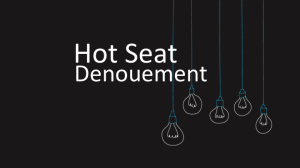Hot Seat Denoument #91: 17 yo F with altered mental status
Posted on: April 6, 2017, by : Haroon Shaukat MD
Daniella Santiago-Haddock MD, Inova Children’s Hospital
The Case
A 17yo F with UC, Anemia, Anxiety and Depression s/p total colectomy with colostomy 1 month prior presents with altered mental status who was maintaining her airway.
Here’s How You Answered Our Questions:
First, what kind of respiratory support would you provide:
What would be your next step in management?
Finally, head imaging is negative and labs are significant for severe hyponatremia to 108. What is your next step in management?
Discussion:
This was a great case to show how en-sync the fellows and attendings were in their management styles. During our live discussion the majority of the group felt that endotracheal intubation was less likely their immediate step in a patient who is maintaining her airway, but felt that preoxygenation of various methods would be an appropriate step preceding that possible route. Dr. Jeremy Root mentioned he would be interested in a non-rebreather mask to help oxygenate his patient.
We then discussed how many of the options of question two would be done simultaneously, particularly the head imaging and lab workup. Dr. Katie Donnely stated that in reality this patient would be ordered for a Head CT but while awaiting radiology to call this patient down, labs would most likely be drawn, specifically a D-stick and Istat chemistry. Dr. Scott Herskowitz mentioned that given her history, electrolyte abnormality seems much higher on his differential rather than an ICH. Therefore, making labs more urgent than head imaging. The group as a whole did however, agree that head imaging is a must as there can be intracranial pathology causing electrolyte abnormalities such as SIADH/CSW/DI.
All in all, the group seemed consistent with the management of hyponatremic seizures in that we wanted to correct the hyponatremia to above the seizure threshold, which Dr. Daniella Santiago-Haddock reminded us is around 120. The attendings reminded us that if this patient was asymptomatic normal saline would not be unreasonable but given her relatively benzo resistant seizures, it was the utmost importance to improve this hyponatremia.
Dr. Maybelle Kou reminded us of the very helpful mnemonics, ABCDE’s and SAMPLE, to ensure we are addressing the patient in a systematic manner as well as not omitting potentially helpful social aspects of the HPI. Dr. Jennifer Chapman gave us a great birds-eye view of AMS and to consider the various organ systems such as respiratory (air hunger), electrolyte abnormalities (hypoglycemia/hyponatremia), intoxication (anticholinergics/amphetamines), and infectious (encephalitis).
Teaching attending for the week Emily Willner posted an excellent mnemonic for AMS:
A Alcohol
E Epilepsy, Electrolytes, Encephalopathy
I Insulin (hypoglycemia)
O Opiates and Oxygen
U Uremia
T Trauma and Temperature
I Infection
P Poisons and Psychogenic
S Shock, Stroke, Subarachnoid Hemorrhage, and Space-occupying Lesion
Denouement:
The patient received 3% saline in the ED with improvement of her serum sodium to 118. She was fluid restricted and admitted to the PICU for continued sodium correction and monitoring of her mental status. Shortly after admission to the PICU, she returned to her baseline mental status. She reported drinking approximately 3 liters of waters every 2-3 hours for the past few weeks, out of fear that her ostomy was going to clog. She had an uncomplicated hospital course, and was discharged 3 days later with normal sodium levels and follow up with Psych, Nutrition, and colorectal surgery.
The information in these cases has been changed to protect patient identity and confidentiality. The images are only provided for educational purposes and members agree not to download them, share them, or otherwise use them for any other purpose.
